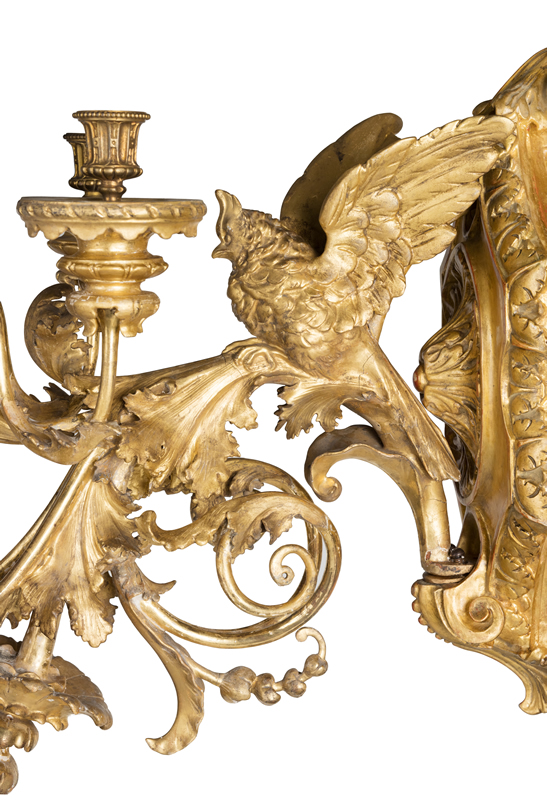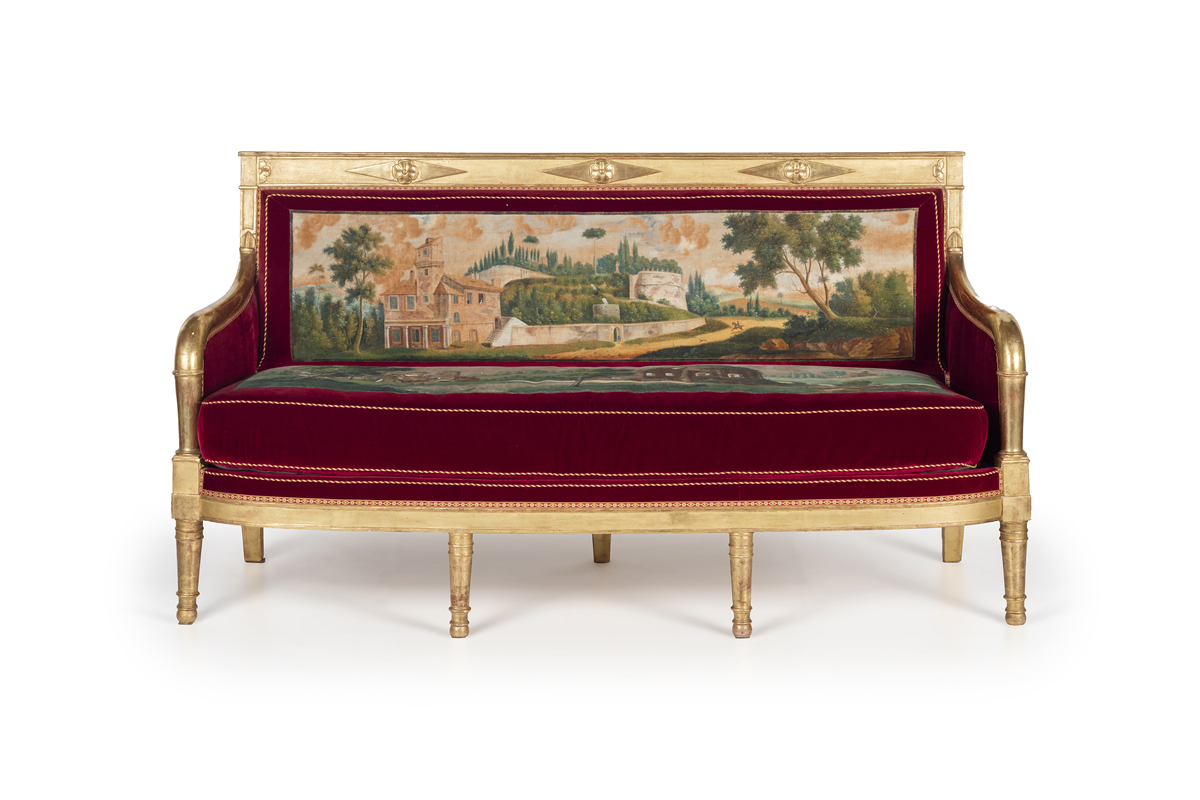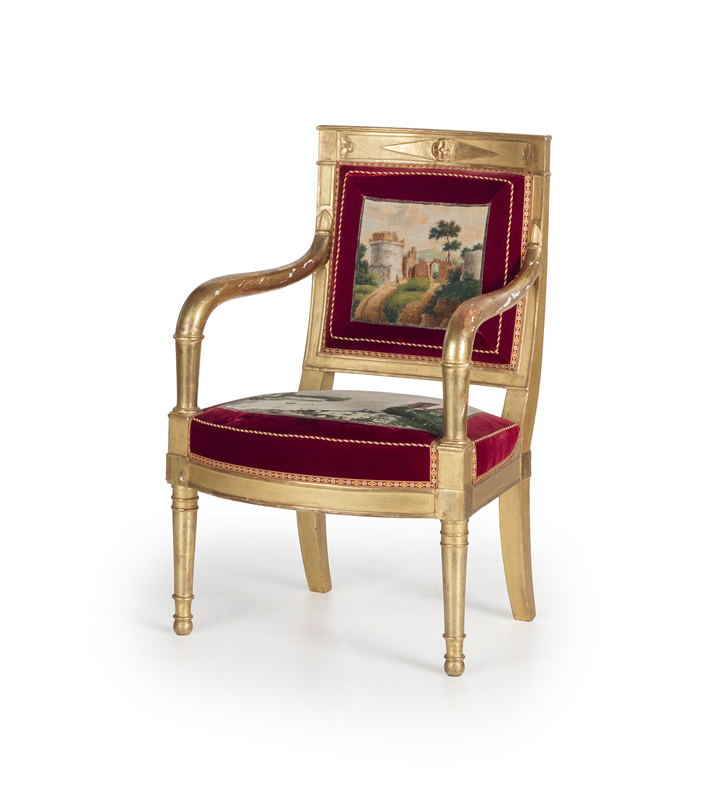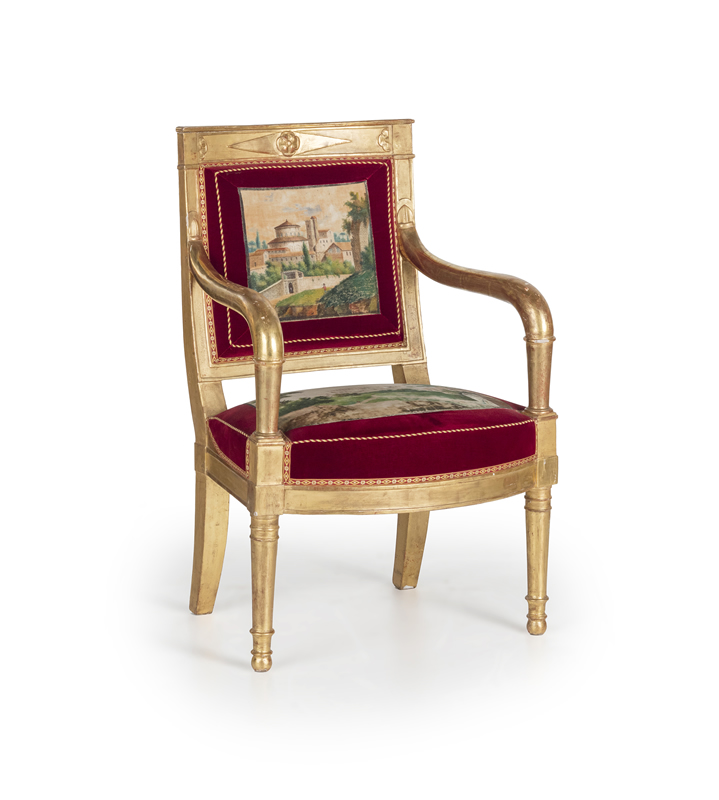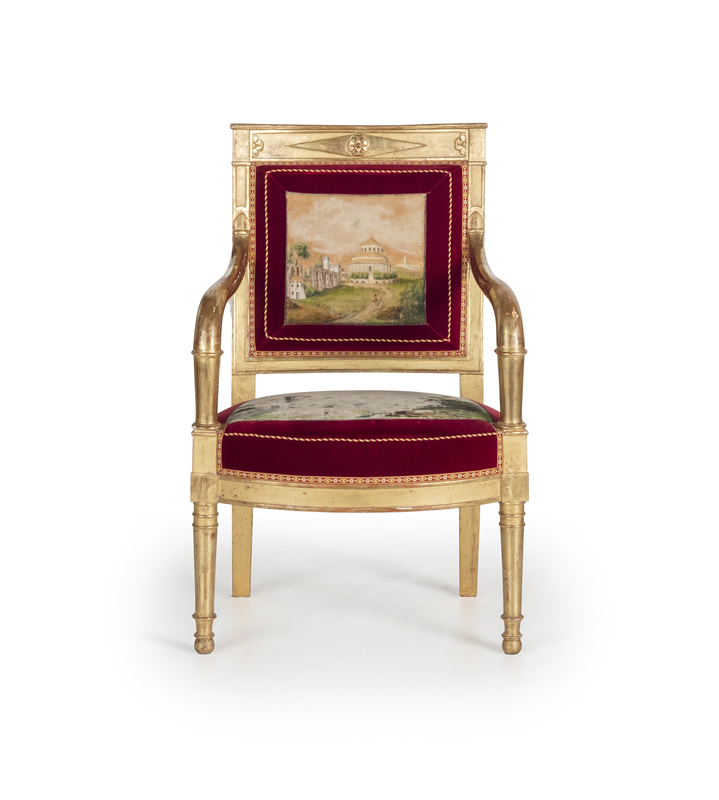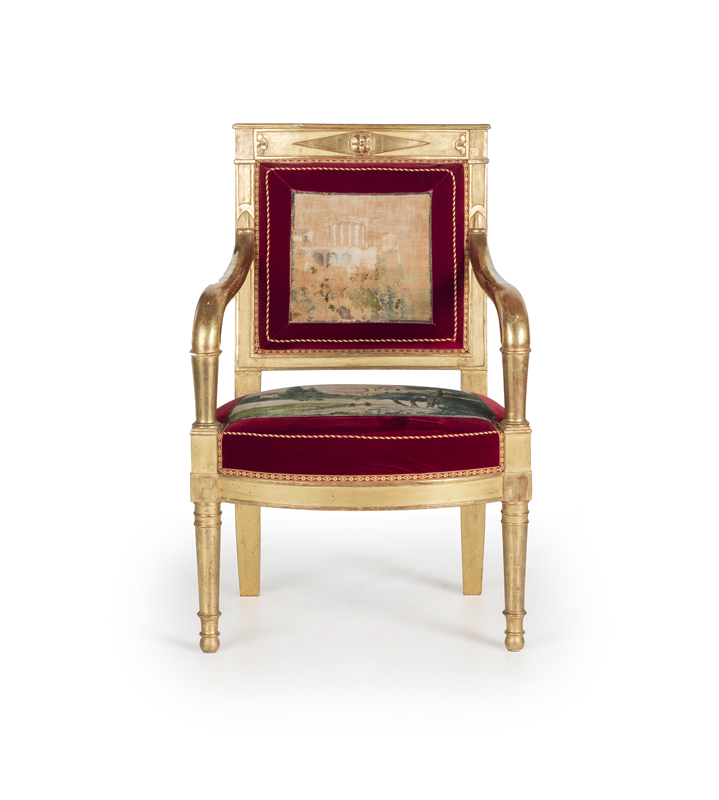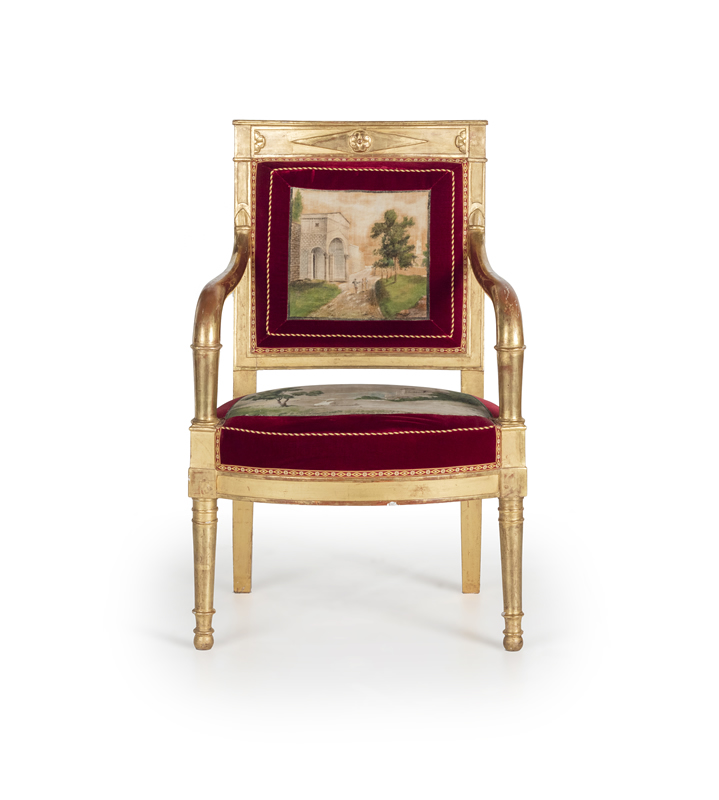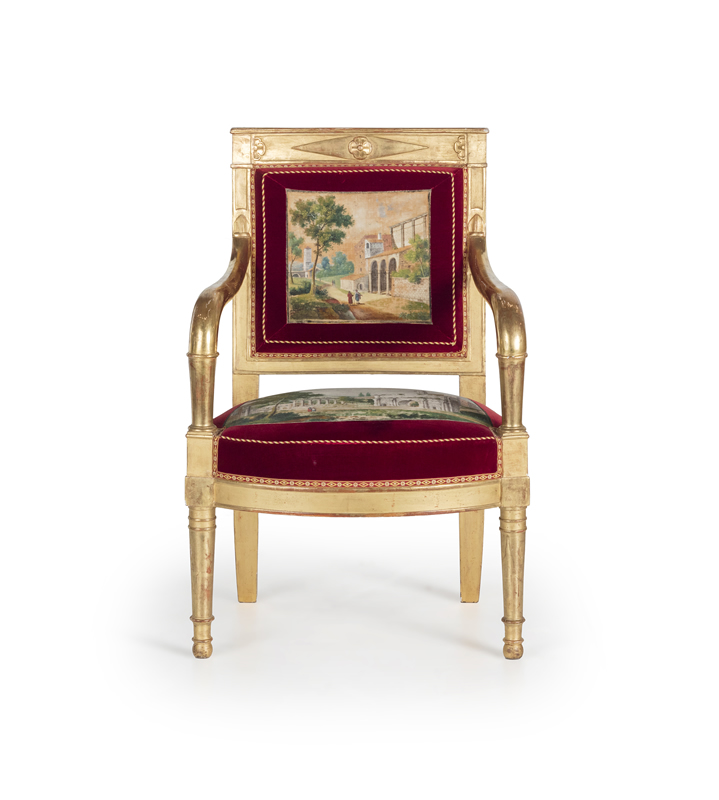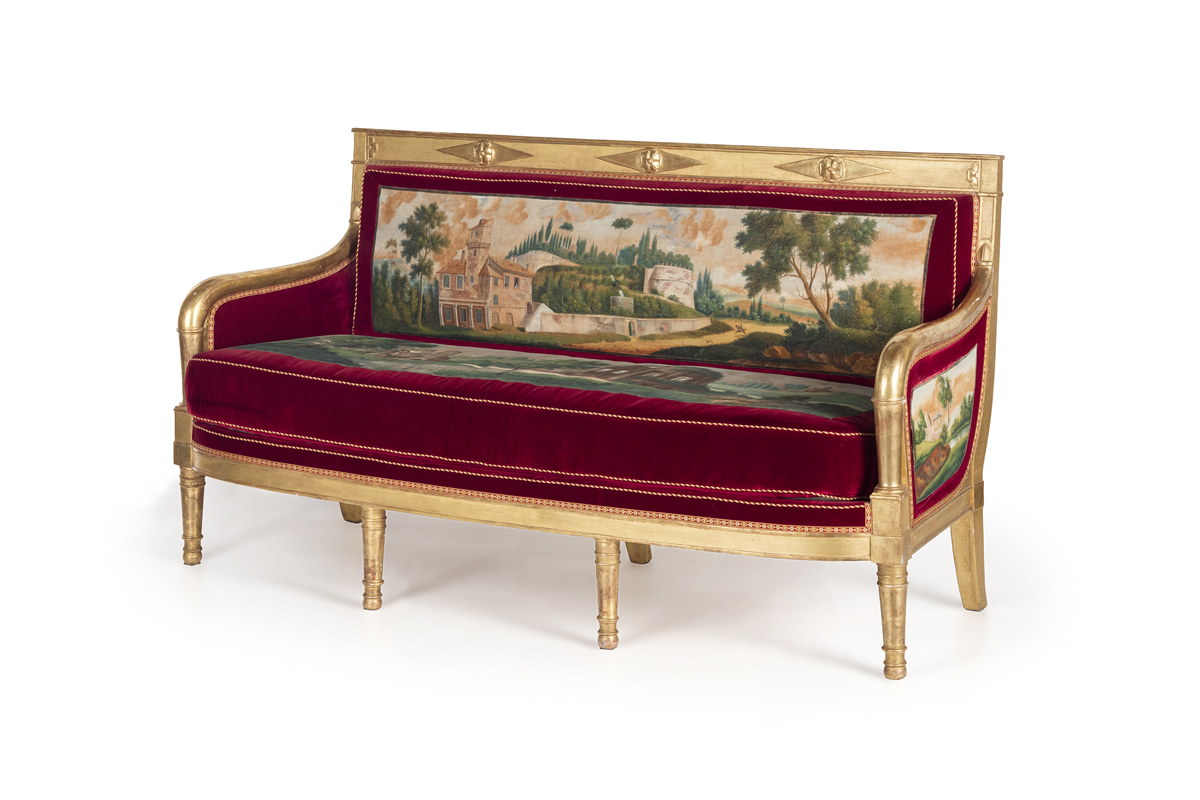Originality and exclusivity are the quintessence of the antique world in all its varied forms. When they are deployed into the sectors of furniture and furnishings and the decorative arts as a whole then they may produce large (as well as less magnificent!) marvels of fine taste.
We possess a splendid example of this with a set of French sitting-room furniture made up of a settee and six chairs from the first quarter of the Nineteenth century upholstered in fabric painted with rural landscapes, views, monuments and architectural ruins from Ancient Rome such as the Forum with the Capitoline bell-tower, the Arch of Septimus Severus and the ruins of the Temple of Concordia, the Tombs of Cecilia Metella and Constantine, the Temple of Vesta and the Tomb of the Plauzi in Tivoli, the Temple of the Tosse on the Via Tiburtina, a view of the Tiber and a partial view of the Old Appian Way.
The set was probably made in 1812 by the company of Delaneuville et Cie in Paris upon demand by the French Senate in order to commemorate the birth of Napoleon Bonapart’s son, Napoleon II, King of Rome and Duke of Reichstadt.
This particular group of furniture has seatbacks that are slightly concave and decorated with stylised
rosettes, armrests of mixed woods, the front legs are in the shape of conical trunks and the back legs are tapered. The mastery of the attention paid to the utmost detail of each and every piece of furniture is accompanied by a delicate yet composed and chromatic vivaciousness in the painted illustrations which confer a certain light composure upon the pieces of furniture as a whole.
A pair of Tuscan metal appliques are of the highest quality and originality – in carved wood, sculpted and gilded in approximately 1860. The pair of appliques is both refined in style and highly articulate and bears a striking similarity to the carved wooden works by the Florentine workshop of Francesco Morini (Florence, 1822 – 1899). Along with other craftsmen such as the Barbettis (and not only) his workshop was commissioned to carry out works for the furnishings of some of the most important palaces belonging to the local aristocracy.
Among his many other assignments, he accepted the commission for some of the rooms in the Villa Favard on the Lungarno (designed by the architect, Poggi). The Villa belonged to Baroness Fiorella Favard de l’Anglade and is now the seat of the Faculty of Economy and Business. Furnishings for the Ball Room are also highly attributable to Morini. Among the various decorative elements in the latter, the most significant would appear to be the stately chandelier with one hundred and ten lights and eight large appliques all en suite.
1032 Views |
Like

